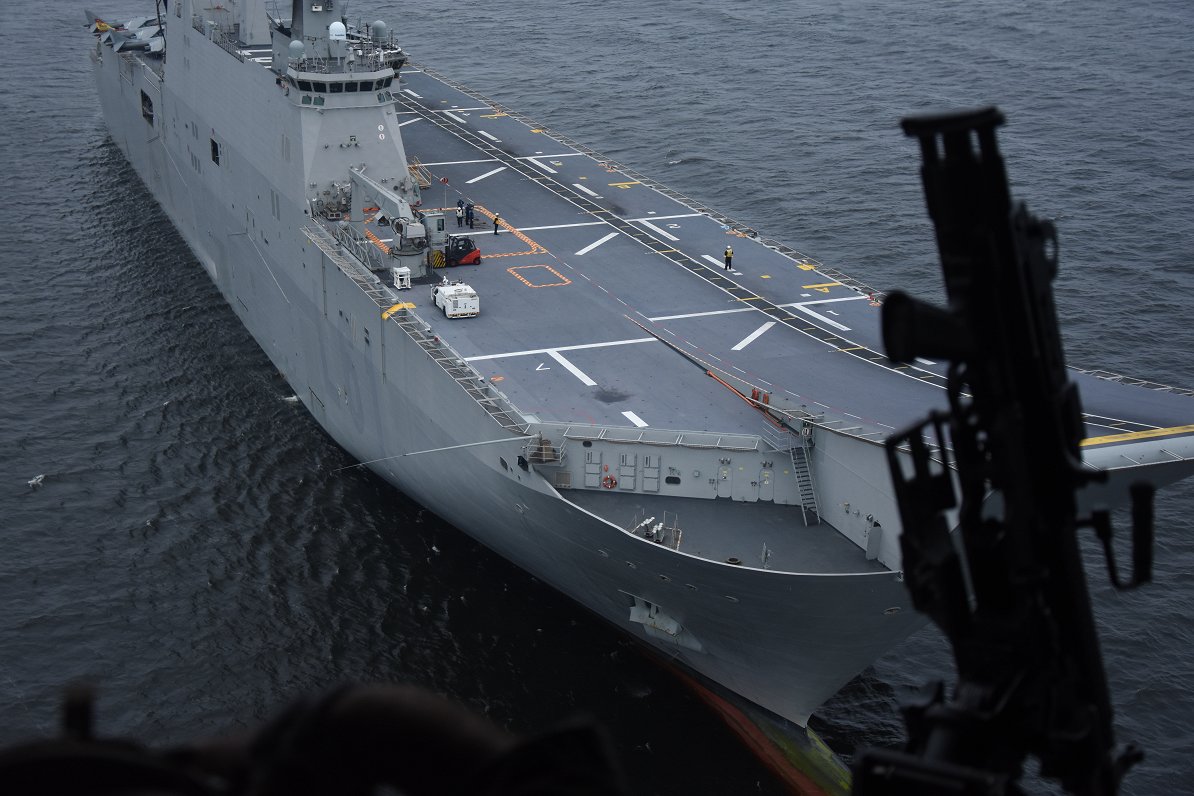The ship of the Spanish Armed Forces, named after the former King of Spain Juan Carlos I, is the largest craft ever to be built in Spain. The ship can perform amphibious operations, relocate large numbers of armed troops and artillery – around 1000 soldiers and 45 heavy battle tanks “Leopard 2”, provide landing for helicopters and destroyers, and be used as a floating hospital.
In recent years, the Latvian Armed Forces have devoted a lot of energy to preparing for the reception of the Allies and developing their abilities of cooperation. It is less known that the allied armies in Latvia and other Baltic countries are also carrying out novel practice operations.
Usually, the pride of the Spanish fleet can be found sailing in the Mediterranean, where it is aiding various NATO operations. Now, however, for the first time in Spanish history, its largest ship is sailing in the Baltic, which has as of late been facing serious security challenges. The Spanish Armed Forces have to contend here with the presence of the Russian fleet, unknown waters and weather. The Spanish sailors, however, say that the operation would be no different from previous ones, if it only weren't for the “cool” Baltic summers.
The active phase of “Baltops 2019” began on June 9, when the crafts marked for training left the Kiel port in Germany. Around 12 000 soldiers, 44 ships, including submarines, 40 air ships from 18 countries are participating in the training. The training is run by the US fleet 2, which was renovated last year, and will conclude on June 21.
In a way, this is a return to the Cold War training models. “Baltops” was launched in 1985 as a way of demonstrating the presence of NATO in the neutral water of the Baltic Sea. After the collapse of the USSR, the Russian Naval Forces also took part in “Baltops”, the main focus of which was improving co-operation between the armies of the great powers. After the Russian invasion of Eastern Ukraine, however, Moscow was no longer invited to participate.
In informal negotiations, it is recognized that the concentration of armed forces and the coordination of many different operations is an opportunity to prepare for possible scenarios wherein the Baltic Sea becomes closed to the Allied fleet and would have to be recovered by force. NATO planners admit that one of the most important issues is the security of communication channels in the region. The Baltic Sea comprises an important communications network connecting the surrounding countries. In the event of conflict, access to the infrastructure would become a critical issue for the Alliance.
Another objective of the training is to show that NATO is taking very seriously the safety of the Baltic States. The Spanish Navy emphasized that their presence demonstrates that, for the southern countries of the Alliance which traditionally face different security challenges, the idea of mutual solidarity and safety is not foreign.
The Spanish Navy carried out an amphibious operation in the Lilaste vicinity on June 12. More than 300 seafarers armed with heavy and light rifles, “Spike” anti-tank missiles, and motorized infantry vehicles landed on the shore to trek to the Ādaži military zone, where they will conduct combat training.
































